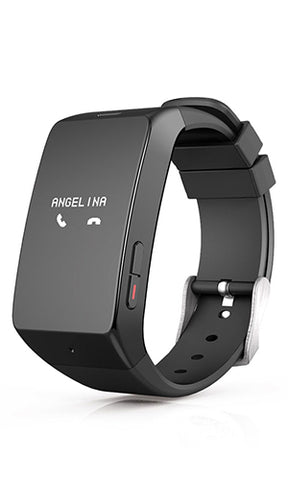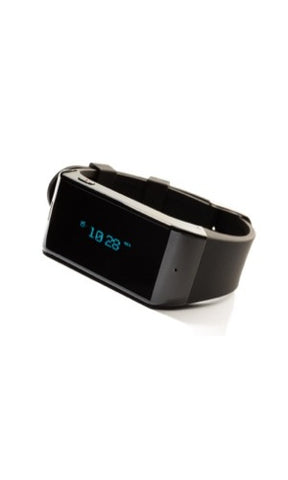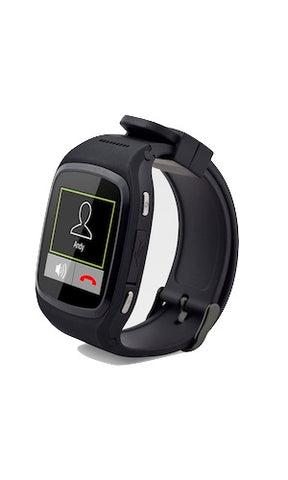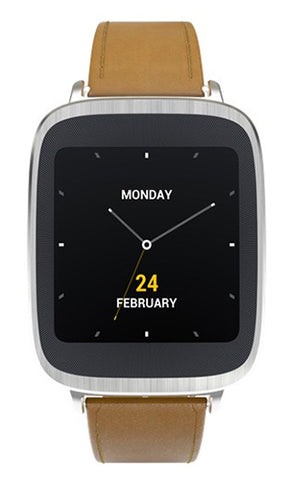The Average Joe’s poor opinion of the Apple Watch should guide the entire industry
Written By
Andrew Tilin
My friend Laurie isn’t attached to technology. She drives a new SUV, but chose against the far pricier hybrid version. She loves to watch movies — in a movie theater, as opposed to always catching them via Hulu online. She finds her iPhone indispensable, except when she doesn’t want to tote it.
So what happens when you mate arguably the biggest innovation in wearable technology with someone who isn’t wedded to electronics?
As a curious journalist with access to the latest “it” device — an Apple Watch — I wanted to know. The recently introduced Apple Watch might be highly anticipated, lusted after, and discussed by those in tech-dom. But what about… everyone else? Is the Apple Watch destined to match the success and acceptance of the iPhone? Or will it suffer the ignominious fate of the Newton, or Microsoft’s Zune? I wanted a glimpse into the Apple Watch’s mass-market future, so I gave Laurie a call.
“How do you wake up this thing?” she says to me from across the table after opening the signature white Apple packaging. It’s a Wednesday morning and Laurie, who’s blonde-haired, compact, and eternally spunky, starts moving the timepiece up and down and side to side. Her tester is the smaller of two Apple Watch models: the 38-millimeter case, anchored to a blue Sport Band.
Laurie soon went home with the watch, and we speak 48 hours later.
“My first impression is how physically pleasurable it is to handle,” she says. “I love the feel of the wheel, and the haptic response. It’s luxurious.”
Laurie is obviously enthusiastic. She’s already played with the watch’s haptic response, or its ability to vibrate and thus “tap” a wearer’s wrist. She also says that the Apple Watch is comfortable and unobtrusive.
I’m in step with Laurie, and not just because I like technology but don’t necessarily obsess over it. I agree with plenty of her Apple Watch first impressions. I have considerable experience with the Garmin Fenix 3, and I immediately like that the Apple smartwatch is far smaller, streamlined, and more elegant. I love how the display comes to life with a natural flick of the wrist, and how quickly I can pick up usable data that I easily programmed the watch to display: time, date, outside temperature, battery charge remaining — all at a glance.
Laurie also mentions something that hadn’t occurred to me. “I haven’t worn a watch for 16 years — initially because I didn’t want to scratch my daughter when she was a baby,” she says. “I’m kind of amazed that I don’t find the watch annoying. I got right back into the habit of turning my wrist to see the time.”
Those ought to be magical words to Apple, and really any company in the smartwatch business. I’ve never stopped wearing a watch, but plenty of people like Laurie have relied on their cell phones for years to track the time. If Laurie seamlessly transitioned back to wearing a watch, others could follow suit.
She had more feedback. Laurie loved the stealth way the watch could vibrate — but not make a peep — when her daughter texted her. She liked how the Activity app gently motivated her to move after sitting at her desk for extended stretches. Her friends who commented on the watch asked her little about its capabilities and mostly about what colors and styles were available (Apple has this nailed: it already offers the watch in myriad aesthetics, and at numerous price points).
Three days of living with the device later, Laurie hands me the watch, in its white box, after we both drop off our kids at school. Her electronic test drive is over.
With a shrug and a shake of her blonde hair, she telegraphs that her mindset has changed. “I don’t think I’m going to get one,” she says. “If it had all of its capabilities but didn’t need the iPhone as a mother ship? That might be a game-changer.”
In the end, Laurie found the watch intriguing but superfluous, and I mostly agree. Without the iPhone and its data trove nearby, the Apple Watch is reduced to life as a regular watch — and Laurie has lived without one of those for the last decade and a half. Come fall, when the Watch gets its watchOS2 update, the native apps may evolve, which in turn may change our attitudes.
Even after the novelty of the Apple Watch somewhat wore off, I found it to be more distracting than always welcome. It was another thing that potentially pulled me away from my work or from engaging with my kids. When my iPhone buzzed, so did my watch, which felt like tech-bombardment. And the battery under-performed: I loved the watch’s fitness-tracking features, but after a long bike ride the Apple Watch needed recharging as much as my legs did. It became one more thing to plug in.
I’ll miss the weather data, and the haptic features, and the silky digital crown. In a moment of weakness, I could still see myself buying an Apple Watch — though as my credit card was being swiped I’d be shadowed by some of Laurie’s final thoughts.
“I don’t necessarily want more devices,” she’d told me. “I want devices that do more.”
To me and perhaps an entire industry, those are guiding words.
Tags: apple, apple watch, Featured Items, HomePage Featured, smartwatch, Smartwatches




